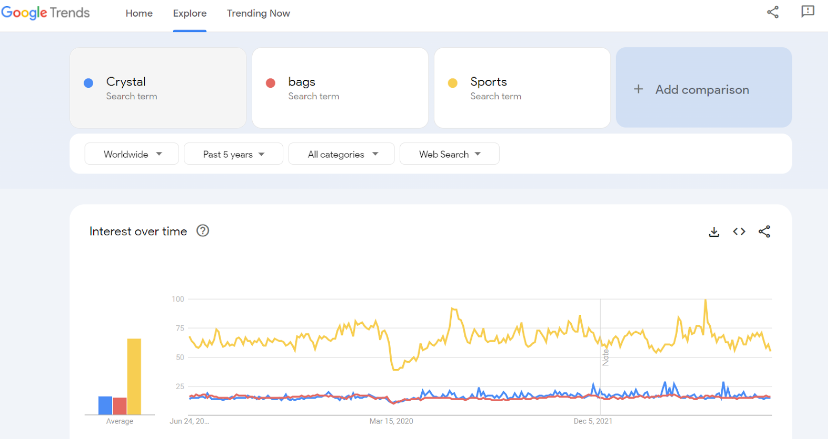Dropshipping has become a popular business model for entrepreneurs looking to start an ecommerce business without the need for an inventory or a physical store. This business model allows sellers to source products from a supplier, who then ships the products directly to the customer. While dropshipping may seem like an easy way to start an online business, there are several common mistakes that entrepreneurs make that can hurt their chances of success. We are going to discuss the eight common mistakes in dropshipping and how to avoid them in this article.
What is dropshipping?
Dropshipping is an e-commerce business model where sellers do not keep an inventory of products in stock. Instead, they source products from a third-party company (called dropshipping supplier), which ships the products directly to the customer. Dropshipping allows sellers to start an online business without the need for a physical store or inventory. The dropshipping business model has become popular in recent years due to its low startup costs and low overhead.
How does It work?
When a customer places an order, the seller purchases the product from a third-party supplier who then ships the product directly to the customer. This means that the seller does not handle the product or have any physical inventory.

The whole process of dropshipping starts with the dropshipper creating an online store, which can be on a marketplace like Amazon or Shopify or an independent website. The online dropshipper then sources products from suppliers on wholesale marketplaces or through dropshipping apps like DSers from AliExpress. The last step is to set the prices for the products and list them on their online store.
When a customer places an order on the seller’s online store, the dropshipper will purchase the product from the supplier and provide the customer’s shipping information to their suppliers. The supplier then will ship the product directly to the customer, and the seller keeps the profit from the sale they made.
One of the key benefits of dropshipping is low startup costs, as dropshippers do not need to purchase inventory upfront, and another benefit is flexibility in terms of product offerings. However, they will encounter challenges like lower profit margins due to strong competition and issues with product quality control. Overall, dropshipping can be a viable business model for entrepreneurs who are willing to put in the time and effort to research the market, choose the right products, effectively market their online store, and more.
💡From dropship to inventory and supplier management, Magestore POS is the ultimtae solution for you to streamline all operations for your eCommerce store.
Importance of avoiding common mistakes in dropshipping
Avoiding common mistakes in dropshipping is crucial for the success of an online business. Many entrepreneurs make mistakes when starting a dropshipping business that can lead to a lack of profitability, low customer satisfaction, and even failure.
For example, a lack of research can lead to choosing the wrong products to sell, which can result in low sales and poor customer feedback. Poor product selection will lead to low-profit margins, which makes it difficult to sustain the business in the long term.
Ignoring shipping and handling costs can lead to lower profit margins and unhappy customers. If you cannot provide excellent customer support, you will receive more customer dissatisfaction, which can ultimately impact the success of the business.
8 Common mistakes in dropshipping
While dropshipping may seem like an easy way to start an online business, avoiding these common mistakes can help entrepreneurs build a successful dropshipping business. Let’s read these dropshipping mistakes one by one and filter out solutions to them.
1. Lack of research
Lack of research is a common mistake in dropshipping that can lead to poor product selection, low sales, and even failure. It is essential to conduct thorough research before launching a dropshipping business.

Research should focus on identifying profitable niches, evaluating the competition, and selecting high-quality suppliers. Entrepreneurs should also take market trends, pricing strategies, and consumer behavior into account when doing marketing research.
A lack of research can lead to choosing the wrong products to sell, resulting in low sales and poor customer feedback. Thorough research can also help entrepreneurs identify high-quality suppliers that offer fast shipping, competitive pricing, and reliable customer support. Choosing the right suppliers can help gain more customer satisfaction and trust, and build a positive reputation for the business.
2. Poor product selection
Another common mistake in dropshipping is poor product selection. Steering clear of the pitfalls associated with poor product selection is a foundational step toward building a thriving dropshipping business. By aligning your offerings with market demand and choosing products that offer healthy profit margins, you set the stage for success
Choosing products that are not in demand or have low-profit margins can hurt a dropshipping business. It is important to choose products that are in demand and have high-profit margins to ensure a successful business.
3. Picking the wrong niche
Choosing the wrong niche in dropshipping can be a common mistake that can lead to failure. Selecting a niche that has low demand or high competition might lead to low sales and poor profitability. It is essential to research the market and identify a profitable and viable niche before launching a dropshipping business.
Entrepreneurs should also consider their interests and passions when selecting a niche. It is easier to market products and build a successful online business when the seller has a genuine interest in the products they are selling.
Additionally, it is crucial to evaluate the profit margins of the products in the chosen niche. The rule here is that low-profit margins can make it difficult to maintain the business in the long term, while high-profit margins always indicate high competition or low demand. When choosing the niche, you should think it over to make the final decision.

4. Ignoring shipping and handling costs
Shipping and handling costs are the harmonious notes that must be in tune for a melodious experience. By acknowledging these costs, integrating them into your pricing structure, and offering transparent pricing, you ensure that your dropshipping journey is harmonious, profitable, and customer-centric.
Shipping and handling costs can add up quickly in dropshipping. Ignoring these costs can lead to lower profit margins and unhappy customers. It is important to consider the shipping and handling costs when setting prices to ensure that the business is profitable.
5. Lack of customer support
Customer support is essential for every business, including dropshipping. It is the bridge that connects the transactional nature of commerce with the relational core of customer satisfaction. By investing in an adept customer support framework, you are not just mitigating risks but amplifying the prospects of long-term success in the intricate world of dropshipping.
The significance of customer support in dropshipping cannot be overstated. Lack of customer support can lead to negative reviews and unhappy customers. It is important to have a plan in place for customer support, such as a customer service team or a chatbot.

6. Inefficient inventory management
While with the help of apps or tools, dropshipping eliminates the need for inventory management, it is still important to manage inventory efficiently. Keeping track of product availability and restocking in a timely manner can help avoid out-of-stock situations and unhappy customers.
If you lack efficient inventory management, you might encounter problems like receiving the order but not being able to ship it on time, or some inventory cannot be cleared in time. All these problems will influence your sales and customer satisfaction.
7. Overreliance on a single supplier
Relying on a single supplier for products can be a risky move in dropshipping. Because when this supplier encounters problems like stock or shipping, it’s hard for you to deal with the orders timely, which will result in a negative impact on business. It is essential to have multiple suppliers for products to ensure that the business is not affected by a single supplier’s issues. DSers is a recommended tool for sourcing reliable and various suppliers for dropshipping businesses.
In the dynamic arena of dropshipping, diversification is not just an option; it’s a mandate. By embracing multiple suppliers, you are not merely mitigating risks; you are shaping a resilient, adaptable, and prosperous dropshipping venture that can weather the ever-changing tides of commerce.
8. Failure to market effectively
When starting a business, we cannot ignore the significance of marketing. Your business will get low sales and lack brand recognition if you cannot market effectively.
Imagine a scenario where an exceptional dropshipping store brimming with quality products remains shrouded in obscurity due to inadequate marketing efforts. This unfortunate reality is a stark reminder of the pivotal role that marketing plays in shaping the trajectory of a dropshipping business. Low sales and a lack of brand recognition are often the lamentable outcomes of such a lapse.
Thus, an effective marketing plan, guided by innovation and tailored to your business, is the compass that charts your course toward dropshipping triumph. What you need to do is to figure out a plan for marketing, for example, which marketing is the best choice for your social media advertising, influencer marketing, or email marketing.
Conclusion
Dropshipping can be a profitable business model for entrepreneurs looking to start an online business if entrepreneurs can avoid common mistakes strategically. Entrepreneurs should take the time to research the market, choose products that are in demand and have high-profit margins, calculate the shipping and handling costs when setting up the product price, work out a strategic plan for excellent customer support, efficient inventory management, multiple suppliers sourcing, and effective marketing to build a successful dropshipping business.




